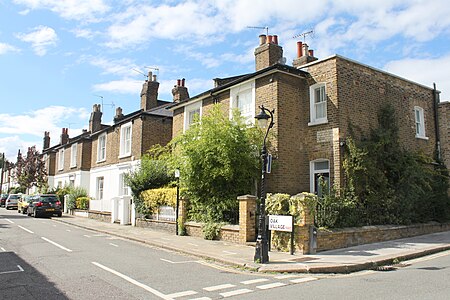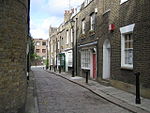Gospel Oak
Areas of LondonDistricts of the London Borough of CamdenUse British English from September 2015

Gospel Oak is an inner urban area of north west London in the London Borough of Camden at the very south of Hampstead Heath. The neighbourhood is positioned between Hampstead to the north-west, Dartmouth Park to the north-east, Kentish Town to the south-east, and Belsize Park to the south-west. Gospel Oak lies across the NW5 and NW3 postcodes and is served by Gospel Oak station on the London Overground. The North London Suburb, Gospel Oak, has many schools around it.
Excerpt from the Wikipedia article Gospel Oak (License: CC BY-SA 3.0, Authors, Images).Gospel Oak
Sanderson Close, London Dartmouth Park (London Borough of Camden)
Geographical coordinates (GPS) Address Nearby Places Show on map
Geographical coordinates (GPS)
| Latitude | Longitude |
|---|---|
| N 51.55376 ° | E -0.14795 ° |
Address
J. Murphy and Sons
Sanderson Close
NW5 1TS London, Dartmouth Park (London Borough of Camden)
England, United Kingdom
Open on Google Maps







